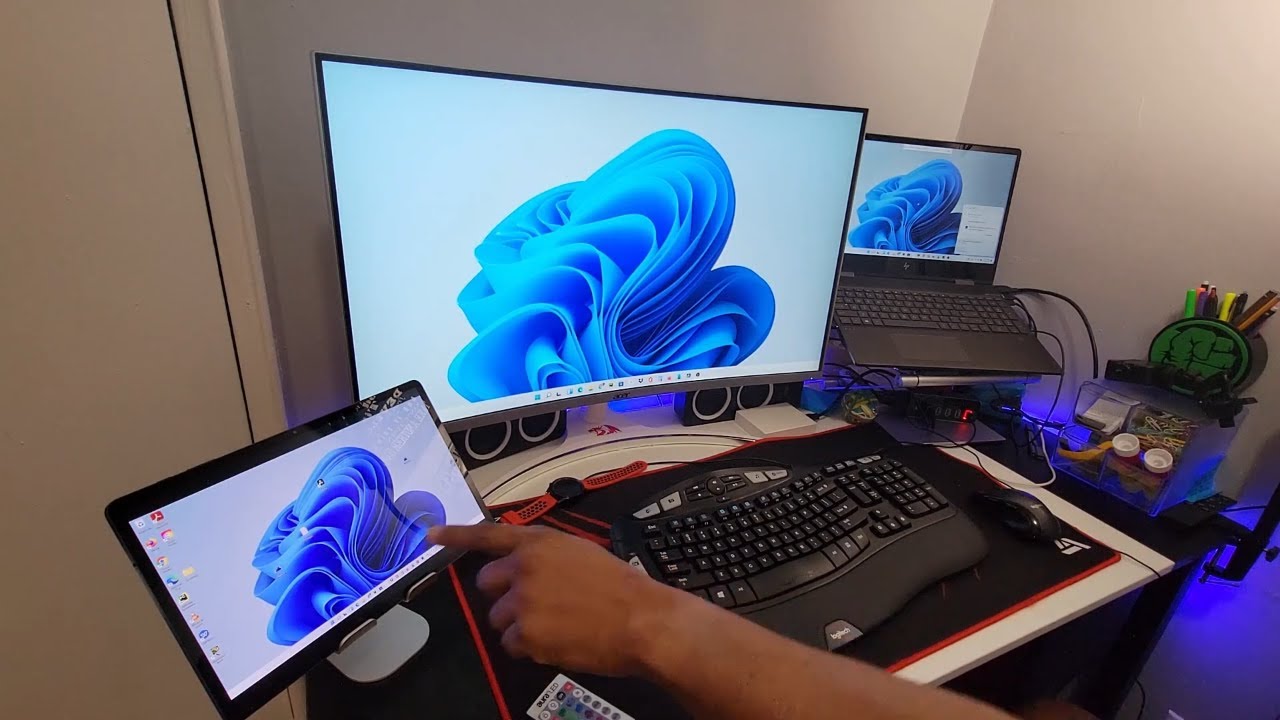
Introduction
Using an Android tablet as a second monitor can boost productivity. It’s like having an extra pair of hands to juggle tasks more efficiently. Whether you prefer a wired connection for stability or a wireless setup for flexibility, plenty of apps and tools are available to help you achieve this. This article covers both wired and wireless methods of connecting your Android tablet to a monitor, including the necessary hardware and software requirements.
Gathering Required Cables and Adapters
Before starting, gather a few essential items to connect your Android tablet to a monitor:
- HDMI Cable: Connects the tablet to the display device. Ensure the HDMI cable matches the type of adapter you're using (e.g., Micro HDMI or USB-C to HDMI).
- USB Type-C to HDMI Adapter: Needed if your tablet has a USB-C port to convert the USB-C port to an HDMI output.
- Power Source: Some adapters may require external power. Ensure a power source is available if needed.
- Display Device: This could be a TV, monitor, or any other display device with an available HDMI port.
Setting Up HDMI Input
Step-by-Step Guide
-
Gather Materials:
- Android tablet
- HDMI cable
- USB Type-C to HDMI adapter (if necessary)
- Power source (if required)
-
Plug the Adapter into the Tablet:
- Insert the USB Type-C end of the adapter into the corresponding port on your tablet.
-
Connect the HDMI Cable:
- Attach one end of the HDMI cable to the HDMI port on the adapter.
-
Power the Adapter:
- If your adapter needs external power, connect it to a power source using the provided cable.
-
Connect to the Display:
- Insert the other end of the HDMI cable into an available HDMI port on your TV or monitor.
-
Select the HDMI Input:
- Use the remote control or buttons on the display to switch to the correct HDMI input channel.
-
Verify the Connection:
- Ensure that your tablet screen is mirrored or extended on the display.
Configuring Your Android Tablet
Accessing Display Settings
-
Open Settings:
- Tap on the Settings app on your tablet.
-
Navigate to Display:
- Scroll down and select the "Display" option.
-
Choose Screen Mirroring:
- Look for options like "Screen Mirroring" or "Cast" and select it.
Adjusting Display Settings
-
Resolution Settings:
- Adjust the resolution to match the capabilities of your display device. This ensures that your content looks clear and crisp on both screens.
-
Screen Orientation:
- Choose between landscape or portrait mode based on your preference.
-
Brightness and Contrast:
- Modify these settings for optimal viewing.
Testing the Connection
-
Play a Video:
- Open a video or app to test the display.
-
Check for Lag:
- Ensure there is no noticeable lag between the tablet and the display.
-
Verify Audio:
- Confirm that sound is playing through the display device if desired.
Using Wireless Methods
While wired connections provide stability, wireless methods offer flexibility and convenience without the need for cables. Here’s how you can use wireless methods to connect your Android tablet to a monitor:
Popular Apps for Wireless Connections
-
Duet Display:
- This app works seamlessly with both Windows and Mac systems, making it a versatile choice for those who use multiple operating systems.
-
Spacedesk:
- Another popular app that allows you to extend your desktop wirelessly, making multitasking easier than ever.
-
Splashtop Wired XDisplay:
- This app provides a reliable wired connection experience but also supports wireless connections for added flexibility.
-
Second Screen Feature (Samsung Tablets):
- If you own a Samsung tablet, the Second Screen feature makes things even easier by providing a straightforward setup process.
-
Screendesk:
- A popular option among users who need a flexible, portable screen solution.
-
Twomon:
- Another good option that supports touch input and mirrors your primary display.
-
SuperDisplay:
- This app enhances productivity by providing a flexible, portable screen solution.
Troubleshooting Common Issues
-
Display Lag:
- Some lag might happen when using wireless connections or older hardware configurations. To reduce it, use a wired connection or ensure both devices are on a fast, stable Wi-Fi network.
-
App Compatibility:
- Not all apps support wireless connections or may have compatibility issues with certain devices or operating systems. Always check app compatibility before making a purchase or download.
-
Display Settings:
- Ensure that your display settings are correctly configured to mirror or extend your tablet's screen properly on the monitor.
-
Power Management:
- If using an adapter that requires external power, ensure it is properly powered to avoid any connectivity issues.
By understanding the steps involved in connecting your Android tablet to a monitor and troubleshooting common issues, you can enjoy the full benefits of having an extra screen at your fingertips. Whether working on a project, watching videos, or simply keeping an eye on social media while you work, using your Android tablet as a second monitor is a game-changer for boosting productivity and enhancing your overall user experience.
